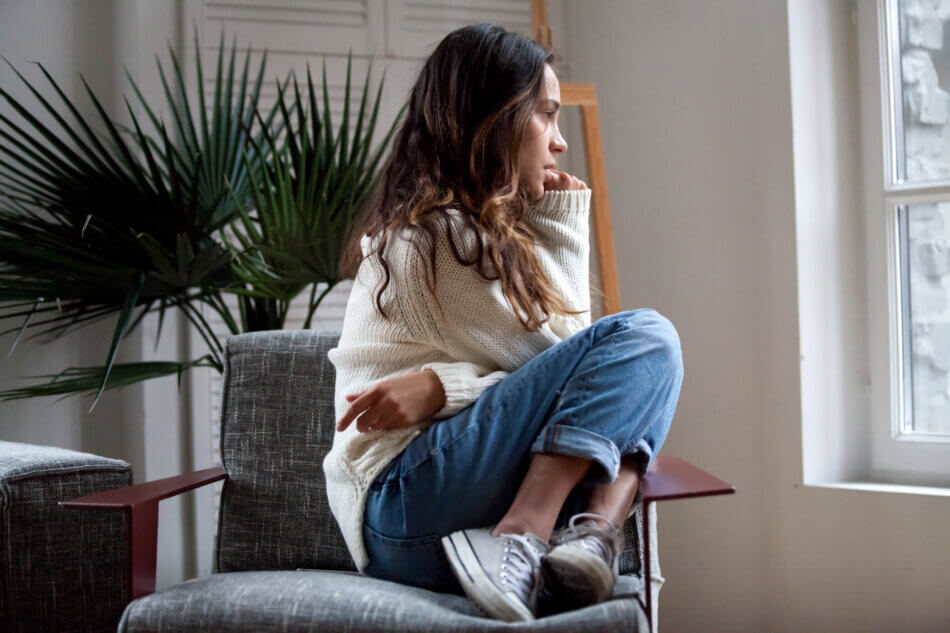Creative arts therapy for emotional expression taps into your natural creativity to help you explore and convey feelings that can be hard to put into words. By engaging in art making, movement, music, or drama within a supportive setting, you access mind-body healing, strengthen emotional resilience, and deepen self-understanding. Whether you’re coping with anxiety, navigating trauma, or seeking overall wellness, this holistic modality offers a safe path toward self-discovery and transformation.
You’ll often find creative arts therapy offered alongside other experiential approaches in integrative mental health programs that accept insurance, giving you the flexibility to mix art therapy with mindfulness, yoga, equine work, and stress reduction practices. If you’re ready to explore nontraditional yet evidence-based methods, this guide will help you understand how creative arts therapy enhances your emotional expression and how to weave it into your holistic care.
Understanding creative arts therapy
Creative arts therapy encompasses professional interventions that use art, music, drama, dance, and writing to support emotional and relational treatment goals. It integrates psychological theory with active art-making and creative processes in a psychotherapeutic relationship.
Defining art therapy
Art therapy is a specialized mental health profession facilitated by credentialed art therapists holding master’s-level or higher degrees. Through visual and symbolic expression, you give voice to personal experiences, fostering insight, emotional resilience, and social transformation [1]. This practice goes beyond recreational crafts or adult coloring books, focusing on the therapeutic process rather than the final product.
Explaining expressive arts therapy
Expressive arts therapy takes a broader approach by blending multiple creative modalities—drawing, music, drama, movement, and poetry—in a single session. This non-directive method helps you bypass language barriers and access pre-linguistic emotions. By engaging kinesthetic, sensory, perceptual, and symbolic channels, you build new neural pathways that support healing beyond conventional talk therapy [2].
Exploring key benefits
Creative arts therapy can transform how you understand and express emotions.
Enhance emotional expression
When you work with colors, textures, movements, or sounds, you tap into unconscious feelings. Visual art media encourage metaphorical expression, helping you externalize complex emotions and make them tangible. Over time, you learn to name, explore, and manage these feelings more effectively.
Reduce stress and anxiety
Art-making engages your mind and body, shifting focus from ruminative thoughts to creative flow. Studies show that engaging in art therapy for at least 45 minutes daily can lower cortisol levels and boost serotonin production, reducing stress and fostering emotional regulation [3]. If you’re interested in structured stress relief, consider stress reduction therapy for adults.
Support trauma healing
Trauma often lodges in the body and subconscious mind. Expressive arts therapy provides nonverbal routes to process traumatic memories. Techniques like mask making or clay sculpting allow you to externalize and transform distressing images safely. This support can complement holistic treatment for trauma recovery in integrative settings.
Improve self-esteem
Completing an art piece or performing a movement sequence gives you a sense of accomplishment. You may discover new strengths and resources you didn’t realize you had. Group sessions also foster acceptance, as peers witness and validate your creative expressions, reinforcing a positive self-image.
Examining therapy methods
Creative arts therapy offers a range of methods tailored to your needs and preferences.
Visual arts techniques
You’ll work with mediums such as drawing, painting, collage, clay modeling, and printmaking. Each method provides unique benefits:
| Technique | Purpose |
|---|---|
| Drawing & painting | Explore emotions through color, line, and form |
| Clay modeling | Experience tactile expression of abstract feelings |
| Collage | Assemble symbolic images reflecting inner themes |
| Printmaking | Reproduce and reflect on emotional symbols |
These visual arts approaches can form the core of art and music therapy for adults.
Movement and dance
Movement therapies integrate dance, gesture, and body awareness to release stored emotions. By focusing on posture, rhythm, and breath, you cultivate mind-body connection and improve emotional regulation.
Music and sound
Working with sound—whether playing instruments, songwriting, or listening exercises—activates neural circuits linked to emotion and memory. Music therapy helps you process grief, trauma, or stress while enhancing mood and relaxation.
Drama and storytelling
Role-play, improvisation, and narrative methods let you explore different perspectives and rehearse coping strategies. By acting out scenarios, you gain insight into patterns of thought and behavior, improving social skills and self-confidence.
Reviewing supporting evidence
A growing body of research confirms the effectiveness of creative arts therapy in various populations.
Depression and anxiety research
A randomized controlled trial found that art therapy interventions—such as collage, drawing, and clay work—significantly reduced symptoms of depression and anxiety in individuals with major depressive disorder [4]. The study highlighted improvements in emotion regulation and goal-oriented behaviors.
Trauma and grief findings
Expressive arts therapy techniques, including mask making, expressive journal writing, and movement exercises, have shown particular efficacy for healing trauma, grief, addiction, and anxiety. Research underscores the creation of new neural pathways that facilitate emotional processing beyond talk therapy [2].
Dementia care outcomes
In dementia programs, activities like painting, pottery, and collage improved self-esteem, quality of life, and independence among Alzheimer’s patients [4]. Engaging in art provided cognitive stimulation and social connection.
Choosing a program
When selecting a creative arts therapy program, consider these factors.
Finding credentialed therapists
Ensure your therapist holds appropriate credentials, such as registration with the American Art Therapy Association. Qualified professionals have master’s-level training and adhere to ethical standards, distinguishing their work from recreational art classes.
Considering insurance coverage
Many integrative therapy programs accept insurance. Look for integrative therapy program that accepts insurance or holistic mental health treatment that accepts insurance. Verify your plan covers art or expressive arts modalities to reduce out-of-pocket costs.
Integrating other modalities
Creative arts therapy often pairs well with complementary therapies. You might join a mindfulness and meditation therapy program, incorporate yoga therapy for emotional healing, or explore equine-assisted therapy for adults. Blending approaches can strengthen mind-body healing and support your whole-person recovery.
Maximizing your experience
To get the most from creative arts therapy, adopt these practices.
Setting goals intentionally
Before you begin, clarify what you want to achieve. Goals might include expressing anger safely, reducing anxiety, or exploring past trauma. Share these intentions with your therapist to guide session planning.
Creating a safe space
Whether you join a group or work one-on-one, find an environment where you feel comfortable taking creative risks. A supportive atmosphere allows vulnerability and encourages authentic expression.
Engaging with the process
Art therapy values the journey over the outcome. Embrace experimentation, let go of perfection, and allow your materials to guide you. This openness fosters insight and emotional release.
Tracking your progress
Keep a reflective journal or portfolio of your artworks and experiences. Reviewing this record can reveal emotional shifts, behavioral changes, and emerging strengths. Celebrate milestones to reinforce motivation.
Integrative holistic programs
Many wellness centers offer creative arts therapy within broader holistic care. You can access multiple experiential options under one roof, often with insurance coverage.
Mindfulness and meditation
Combining art or movement with mindfulness deepens your awareness of thoughts and feelings in real time. Learn to observe inner experiences without judgment, enhancing self-compassion and emotional balance. Explore our mindfulness and meditation therapy program for more details.
Yoga therapy for healing
Yoga integrates breath, posture, and movement to release tension and cultivate embodied awareness. When paired with creative practices, yoga supports deeper exploration of emotions and encourages ongoing self-care. See yoga therapy for emotional healing.
Equine-assisted therapy overview
Working with horses can mirror your emotional state, offering immediate biofeedback. Equine sessions build trust, enhance nonverbal communication, and foster confidence. Many programs blend art therapy with equine work for a rich experiential mix; learn more in our equine-assisted therapy for adults.
Stress reduction practices
You might combine breathing techniques, progressive muscle relaxation, and creative imagery to alleviate chronic stress. These practices integrate well with art making, offering multiple pathways to calm your nervous system. See stress reduction therapy for adults.
Experiential DBT integration
Dialectical behavior therapy skills—mindfulness, distress tolerance, emotion regulation, and interpersonal effectiveness—can be taught through art and movement. This hybrid approach helps you practice DBT techniques in tangible, creative ways. Discover our experiential therapy with dbt integration.
Putting it all together
Creative arts therapy for emotional expression invites you to explore, feel, and transform through art, movement, music, and drama. Supported by research and delivered by qualified therapists, it complements a spectrum of holistic modalities—from mindfulness and yoga to equine work and stress reduction.
By choosing an integrative program that accepts insurance, you gain access to personalized, evidence-based care that honors your whole person. As you engage with the process, set clear goals, and track your journey, you’ll uncover new facets of your emotional life and build lasting resilience. If you’re ready to deepen your healing path, consider creative arts therapy as a powerful step toward renewed well-being.











